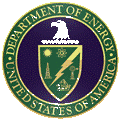United States Department of Energy

United States Department of Energy: Publications
Date of this Version
2008
Citation
NATURE BIOTECHNOLOGY VOLUME 26 NUMBER 5 MAY 2008; doi:10.1038/1360
Abstract
With the quantity of genomic data increasing at an exponential rate, it is imperative that these data be captured electronically, in a standard format. Standardization activities must proceed within the auspices of open-access and international working bodies. To tackle the issues surrounding the development of better descriptions of genomic investigations, we have formed the Genomic Standards Consortium (GSC). Here, we introduce the minimum information about a genome sequence (MIGS) specification with the intent of promoting participation in its development and discussing the resources that will be required to develop improved mechanisms of metadata capture and exchange. As part of its wider goals, the GSC also supports improving the ‘transparency’ of the information contained in existing genomic databases.

